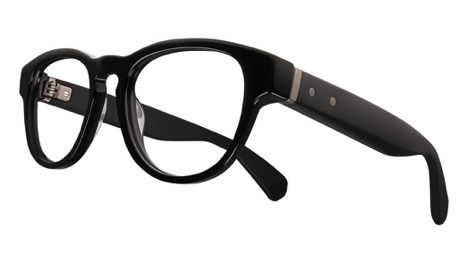
Image courtesy of VSP Vision Care
We all remember the brief appearance of Google’s Glass in the consumer market, but that wasn’t the end for smartglasses. Research continues, and healthcare presents a huge opportunity for monitoring and analysis of the information smartglasses can provide. According to the article, “Wearable eye tracking for mental health monitoring” by Mélodie Vidal, Jayson Turner, Andreas Bulling, and Hans Gellersen [Computer Communications 35 (2012) 1306-1311] eye tracking information can provide early detection and identification of certain types of dementia, mental disorders and brain related diseases.
It is important to remember that this research is continuing, and what is noted here are the results of studies identified in the article.
Researchers are examining the link between eye movements and the central nervous system. Scientists believe disorders and diseases that affect the brain also influence eye movements, and, working backwards so to speak, analysis of eye movements can help identify the underlying causes. Smartglasses and AI analysis can pinpoint subtle differences in eye movement characteristic of various conditions.
For example:
Autism – Children on the autism spectrum tend to have saccades, the rapid movement of the eye between fixation points, which are shorter and slower than normal. Smartglasses can identify that pattern in very young children resulting in early detection.
Schizophrenia – Smooth pursuit eye movements, the voluntary visual tracking of a moving object, are impaired in schizophrenia, and there is an increased frequency of saccades.
Alzheimer’s disease – Inhibitory saccades, the normal, transient suspension of saccades in the presence of a visual distraction, are impaired, as well as dysfunction of smooth pursuit.
Dyslexia – With this condition, fixations, the time between saccades, are longer and saccadic control overall is abnormal.
Multiple Sclerosis – Abnormal smooth pursuit and differences in the velocity of saccades between the eyes are early indicators of MS.
AIDS Dementia Complex (ADC) – Smooth pursuit impairment is an early indicator of this neurological disorder associated with AIDS.
Smartglasses that track eye movements present a convenient, noninvasive diagnostic tool that can be used over long periods of time, if needed, for more comprehensive analysis, without the discomfort associated with other types of medical monitoring. And there’s more. Scientists already have demonstrated that eye tracking can be used to identify heart disease and diabetes. You can bet the applications won’t stop there! Ultimately, smartglasses will look just like the ophthalmic frames for vision correction, making them all the more comfortable and convenient to use.
As ECPs, we’ll have to buckle up to keep abreast of an optical world in which glasses aren’t just for seeing! You can learn much more about this next generation of smartglasses in this month’s edition of 20/20 Magazine in the article, The Second Coming of Consumer Smartglasses. You can also learn about how contact lenses are keeping up with this technology with our CE, Therapeutic Contact Lenses and Beyond, at 2020mag.com/ce.












